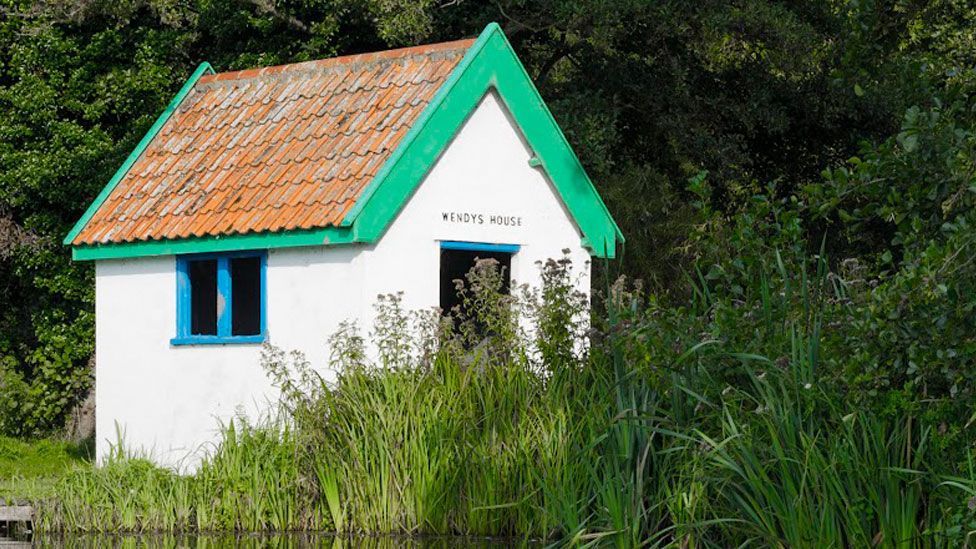Royal Hospital School's head teacher Simon Lockyer's delight as Holbrook's cherished Crinkle-Crankle Wall listed by Historic England
By Derek Davis 1st Mar 2024
By Derek Davis 1st Mar 2024

The iconic Crinkle-Crankle Wall in the walled garden at RHS has been awarded Grade II listed status by English Heritage.
The distinctive crinkle-crankle wall - which used fewer bricks in response to the Brick Tax (1784 to 1850) was among five parks and garden awarded Grade II listed status after a two-year, £36,000 Historic England project.
The other parks and gardens receiving Grade II listing include Abbot's Hall in Stowmarket, the pleasure grounds of an early 18th century house; the unusual early country house landscape of mooted Crow's Hall in Debenham and Staverton Park, a medieval deer park at Wantisden, near Eyke, and once owned by royalty, receives Grade II* listing
Simon Lockyer, headmaster at RHS, expressed his delight at the recognition, and said: "The wall is a source of considerable interest and is part of the oldest section of the school. It precedes the school's relocation here in 1933. Though the original house on the grounds is no more, this garden, with its rich history, remains a cherished part of our campus."

Mr Lockyer went on to highlight the historical significance of the crinkle-crankle wall in protecting the garden, which was used to supply the school's kitchens. Today, the space is utilised for various purposes such as theatre performances, fetes, parties, and is available for weddings. Just beyond the listed wall, pupils actively participate in growing their own produce, embodying a sustainable approach to education.
The headmaster also emphasised the unique charm of the Crinkle-Crankle Wall, explaining its nomenclature: "The reason it is deemed a Crinkle-Crankle wall is because it was a cheaper way of building walls, using a single skin of brick with a distinctive curve that provided both aesthetic beauty and structural integrity. This cost-effective design has stood the test of time with minimal repairs, maintaining its original shape."
Addressing the protective status bestowed upon the wall, Lockyer added: "It's lovely because these sorts of features are just wonderful, both architecturally and in this part of Suffolk. We're dedicated to preserving the historic elements of our architecture and countryside. The Crinkle-Crankle Wall, with its Grade II listing, attests to our commitment to safeguarding these cherished aspects of our heritage."
This recognition not only celebrates the architectural uniqueness of RHS but also acknowledges the deep-rooted connection the Crinkle-Crankle Wall has with the community. Mr Lockyer shared anecdotes of staff members with more than 40 years of service and a gardener who dedicated more than f50 year service to the space, underscoring the wall's significance beyond its physical structure.
The Crinkle-Crankle Wall, now officially recognised and protected, stands as a testament to the rich history and enduring legacy of RHS
Meanwhile, a boating lake inspired by JM Barrie's Peter Pan and created by a friend of the author as part of a holiday village has received Grade II listing.
The Meare at Thorpeness, Suffolk was designed so children could row or sail in the safety of shallow water, stopping at islands with names such as the Pirate's Lair and Wendy's House.
It was built more than a century ago and features islands, water channels and open lakes

Some of the islands have small buildings on them, including one named Wendy's House, inspired by JM Barrie's Peter Pan
Project volunteer Patience Shone said: "It has been interesting learning about the complexities of the listing process that is intended to protect these important Suffolk sites for future generations."
Thorpeness was the inspiration of landowner Glencairn Stuart Ogilvie, after the lawyer, playwright and amateur architect inherited the Sizewell Hall estate from his parents.
He came up with the idea of creating a purpose-built holiday village, the first of only two complete planned resort villages in Britain.
The 60-acre (25ha) Meare was central to his plan, intended to allow children the freedom of unsupervised play, featuring islands, water channels and areas of open lake no more than 1m (3.2ft) deep.
As JM Barrie was a good friend, Mr Ogilvie was given permission to use Wendy's House and the crocodile from Peter Pan, while other inspiration came from Charles Dickens' Peggoty's House.
Aimed at stimulating imagination and adventurous play, creations also included the Smuggler's Cave and the Pirate's Lair.
Staverton Park, which contains a dense area of oaks and hollies called "The Thicks", received Grade II* listing
Crow's Hall, Debenham, was listed for its wide, water-filled moat and the mid-16th Century manor house's origins go back to the 14th Century.
CHECK OUT OUR Jobs Section HERE!
shotleypeninsula vacancies updated hourly!
Click here to see more: shotleypeninsula jobs
Share:






